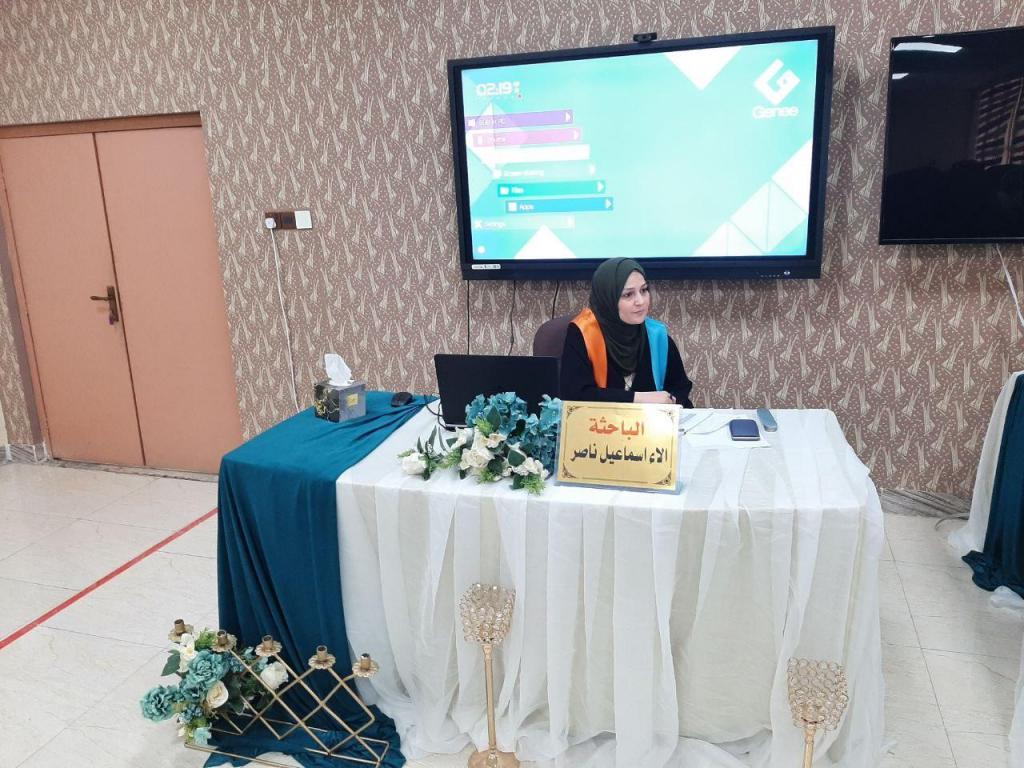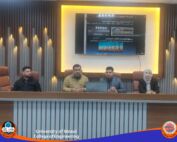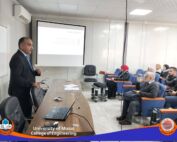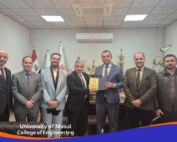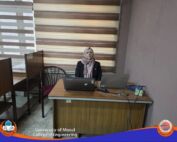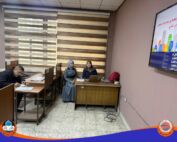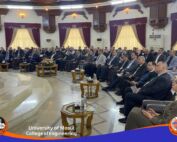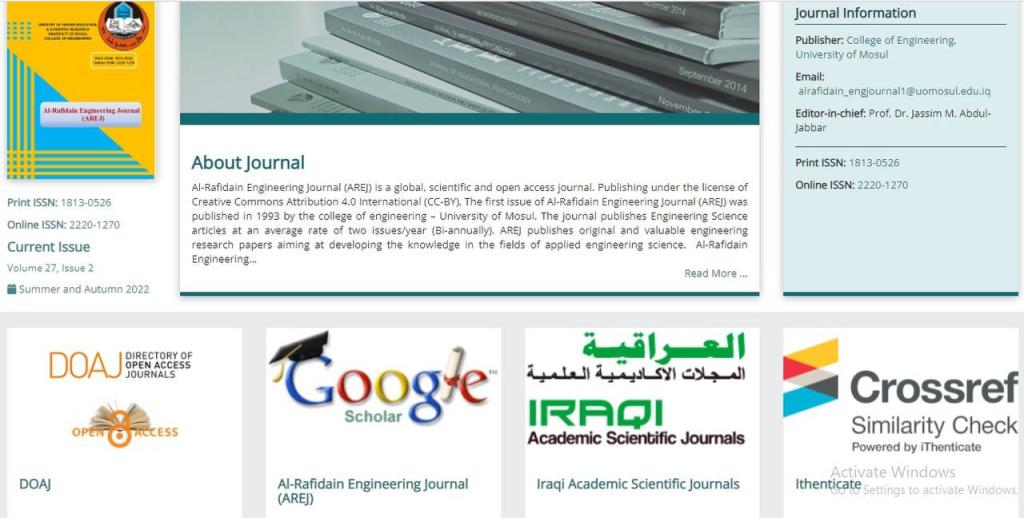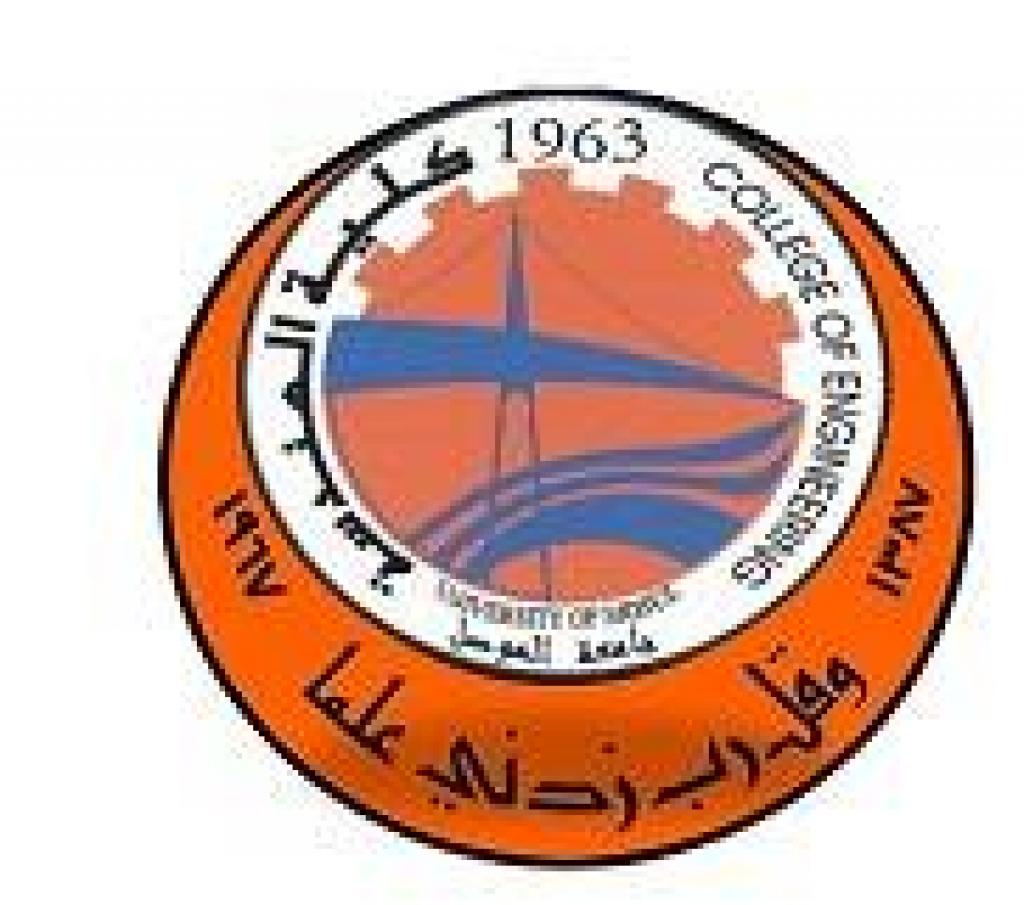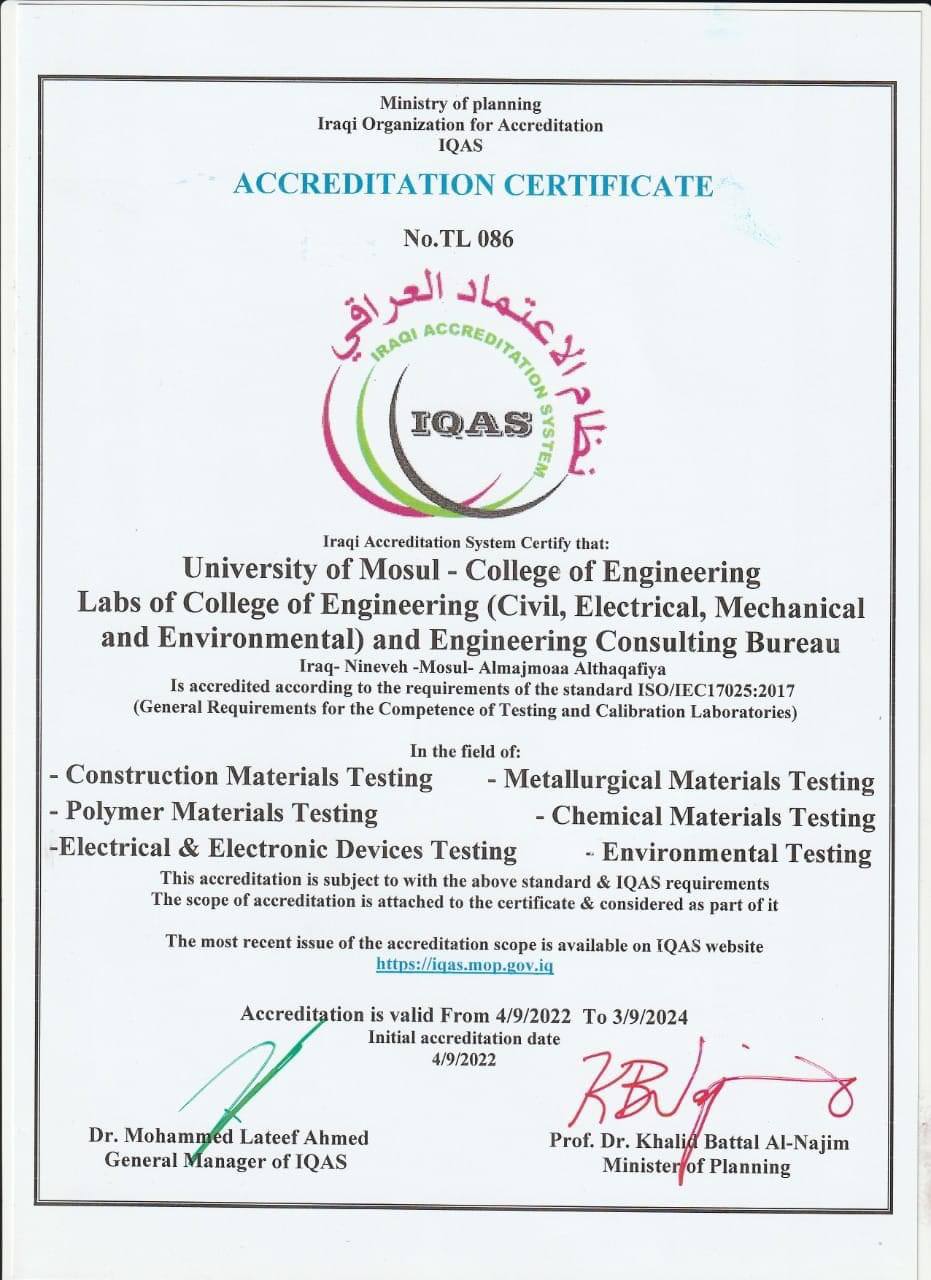19 September، 2021
Master Thesis at Department of Dams and Water Resources Engineering on “Evaluation of AquaCrop Model for Wheat Productivity in Rainfed and Supplemental Irrigation in Rabia Region”
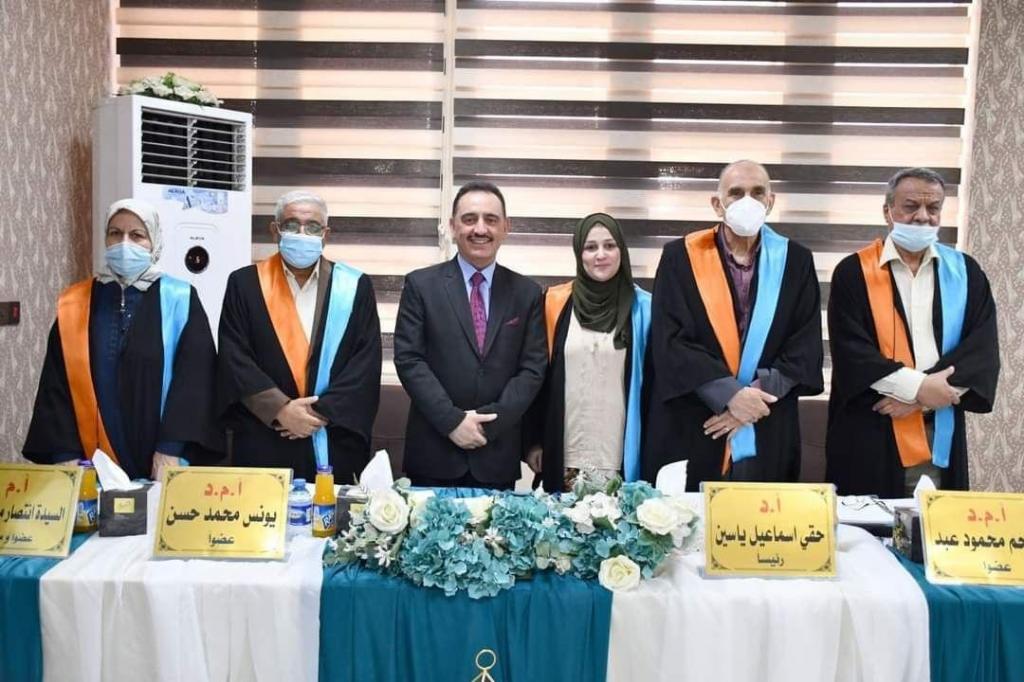
A master’s thesis was discussed in Department of Dams and Water Resources Engineering / College of Engineering at University of Mosul on “Evaluation of AquaCrop Model for Wheat Productivity in Rainfed and Supplemental Irrigation in Rabia Region” on Sunday, Sep. 19, 2021 submitted by postgraduate student (Alaa Ismail Nasir).The Thesis included calibrating AquaCrop model based on climatic, field data, and the approved planting dates in Rabi’a, then evaluating wheat productivity in cases of rainfed and supplemental irrigation for a set of years classified as wet, semi-wet, semi-dry, and dry, according to the wheat consumption water. The actual sowing date was determined based on actual initial soil moisture resulting from accumulative rainfall, which represents the effective rain depth equal to the net irrigation depth required to irrigate wheat for initial root zone depth of 30 cm, then the effect of different sowing dates on wheat productivity and water productivity was studied. To address the lack of rain at the beginning of the season, the effect of adding benefit irrigation with different depths to the actual and assumed sowing dates was studied.The results showed that the best sowing dates for increasing wheat productivity and water productivity were at 15-December and 1-January. The lack of rain at the beginning the season can also be addressed by adding a benefit irrigation before sowing date, according to rain distribution variation of each year, besides identifying the best supplemental irrigation according to the critical stages of each season.In semi-dry and dry years with a productivity of 0 ton/ha, failure and loss can be avoided, productivity and water productivity improved by setting the most appropriate sowing date, then adding benefit irrigation before sowing date with supplemental irrigation during the growing season, depending on stage’s response and sensitivity to water addition.

